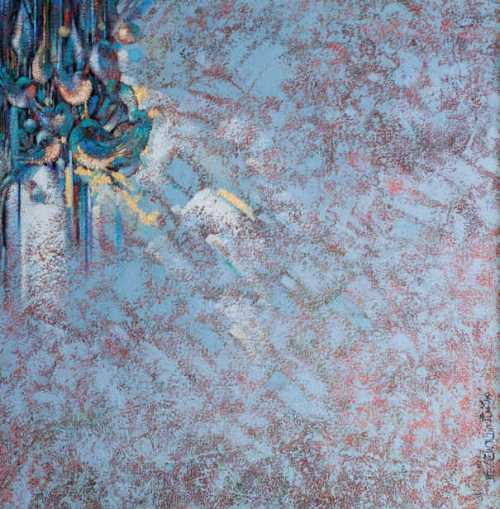About Morteza Goudarzi
Morteza Goudarzi, a painter, lecturer, and art critic, was born in Borujerd. He was a painting student at the Faculty of Fine Arts in Tehran and got his master's degree in painting from Islamic Azad University. Then he moved to England and completed a doctorate course in the philosophy of art at the University of Birmingham, England. After returning to Iran, he became a member of Soureh University. Since 2009, he has been the head of the visual arts center of the Hozeh Honari institute. He was also director of the Institute of Studies and Researches of Iran and the Islamic Culture and Art Institute. Goudarzi won first place in the visual arts festival of the country's cities in 1988 and was the winner of the 4th Biennale of Painting in Tehran in 1997. In 2014, Goudarzi's first solo exhibition, "Silence Attack," was held at Sareban Gallery. In the following years, he exhibited his works individually in cooperation with galleries such as Shirin and Artibition.
He has been active in the theoretical field of research and has written more than a hundred scientific articles between 1997 and 2001. He has also been a speaker at numerous research and art conferences and events and has spoken about modern and traditional art, contradictions of modernity, and the new language of world art.
Goudarzi Dibaj's paintings oscillate on the border between abstraction and representation. He can be considered a landscape painter. Most of the landscapes in his paintings are made up of areas of color and texture. Areas that, as part of a hill or a plain, conquer the picture, creating an excuse for the painter's revelation in the color qualities and rhythms of the brush. Cold or warm colors of the same family sit together in a confused and fade away, and the arc and rotating rhythm of the brushstrokes causes the visual and sensory movement of this part of the painting. Thatched houses or shrubs can be seen in the corner of these landscapes. The dialogue between the objective and the subjective and the effort to balance these two forces forms the core of Goudarzi's works of art aesthetics.
The Most Expensive Artwork
At Auctions
First Attendance
29 May 2015
# Attendance
9
# Artworks
9
Average Realized Price
3,059 USD
Average Min Estimate
2,449 USD
Average Max Estimate
3,518 USD
Sell-through Rate
100%
Average Growth of Artwork Worth
3.714%
Timeline
The 24th Tehran - Contemporary Iranian Art auction
3 October
The 23rd Tehran - Modern and Contemporary Iranian Art auction
22 May
The 13th Art Expo of Several Generations of Iranian Contemporary Artists exhibition
7 February
Tehran- 16th- Iranian contemporary art auction
1 July
The 14th Tehran- Contemporary Iranian Art auction
12 August
No.2 auction
6 March
دوازدهمین دوره حراج تهران auction
17 January
دهمین دوره حراج تهران auction
11 January
The 6th Tehran- Contemporary Iranian Art auction
23 December
چهارمین دوره حراج تهران auction
29 May
